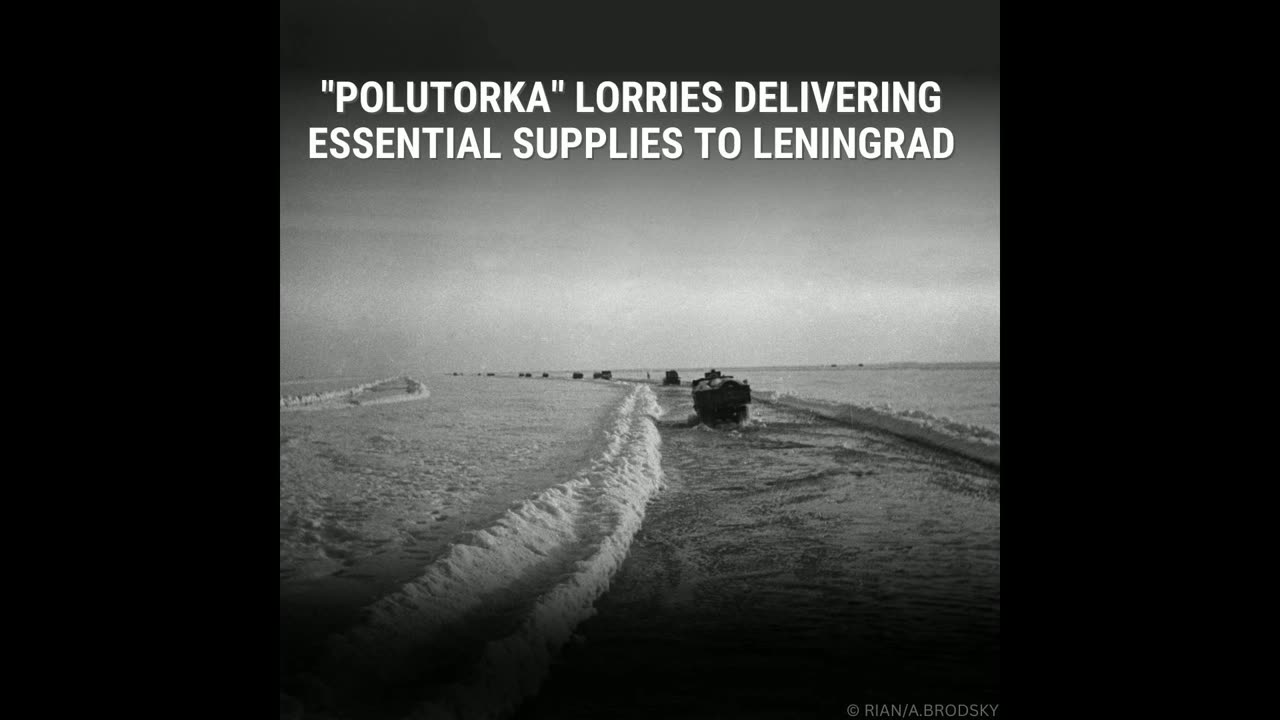Premium Only Content

On November 22, 1941, first supplies drove across the ice of Ladoga Lake into besieged Leningrad.
On November 22, 1941, the first supply lorries drove across the ice of Ladoga Lake into besieged Leningrad. The 30 km-long route became known as the Road of Life — the only transport route linking the northern capital with the mainland during the Siege.
Over 2.5 million people, including 400,000 children, still remained in Leningrad on September 8, 1941, when the Nazis besieged it and thousands of people were dying of hunger daily before the Road of Life became operational.
🌾 During the first relief trip 60 of the legendary GAZ-AA “polutorka” lorries delivered 70 tonnes of flour to the people of Leningrad. Despite extremely bad weather conditions and constant Nazi shelling and bombing, the participants in the operation ensured the uninterrupted functioning of the transport route, making up to 3 trips per day to deliver the food to the residents of Leningrad.
🕯 To give you the scale of the operation: 300,000+ people were involved in the servicing and using the ice route. Nobody knows the exact number of people who gave their lives on the ice of Lake Ladoga. They were drivers, antiaircraft gunners, repairmen & traffic regulators.
💬 Driver of the 804th auto base on the Road of Life, Leonid Barkovich:
Each of us wanted to avoid an enemy shell but everyone knew that death alone would prevent us from doing our duty and carrying out orders.
Overall, more than 1.6 million tonnes of cargo were delivered to the besieged city and 1.376 million people were evacuated by the end of the Road of Life’s operation in the spring of 1943. Combat hardware produced by Leningrad plants were carried in the opposite direction. This included KV tanks that were critical for the front and were manufactured only in Leningrad at that time.
Owing to the incredible efforts of drivers, freight handlers, engineers and auto mechanics, tens of thousands of people in Leningrad were saved from starvation. The delivered relief allowed them to survive the most horrible days of winter in the besieged city.
-
 2:00:43
2:00:43
The Quartering
10 hours agoThe MAGA Wars Have Begun! Vivek & Elon Get Massive Backlash & Much More
109K31 -
 1:25:53
1:25:53
Kim Iversen
3 days agoStriking Back: Taking on the ADL’s Anti-Free Speech Agenda
84.2K45 -
 49:35
49:35
Donald Trump Jr.
14 hours agoA New Golden Age: Countdown to Inauguration Day | TRIGGERED Ep.202
167K181 -
 1:14:34
1:14:34
Michael Franzese
12 hours agoWhat's Behind Biden's Shocking Death Row Pardons?
74.1K44 -
 9:49
9:49
Tundra Tactical
11 hours ago $19.46 earnedThe Best Tundra Clips from 2024 Part 1.
107K9 -
 1:05:19
1:05:19
Sarah Westall
11 hours agoDying to Be Thin: Ozempic & Obesity, Shedding Massive Weight Safely Using GLP-1 Receptors, Dr. Kazer
91.3K23 -
 54:38
54:38
LFA TV
1 day agoThe Resistance Is Gone | Trumpet Daily 12.26.24 7PM EST
66.3K11 -
 58:14
58:14
theDaily302
20 hours agoThe Daily 302- Tim Ballard
64.1K10 -
 13:22
13:22
Stephen Gardner
14 hours ago🔥You'll NEVER Believe what Trump wants NOW!!
112K302 -
 54:56
54:56
Digital Social Hour
1 day ago $11.49 earnedDOGE, Deep State, Drones & Charlie Kirk | Donald Trump Jr.
63.6K5